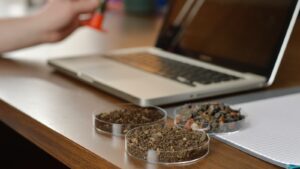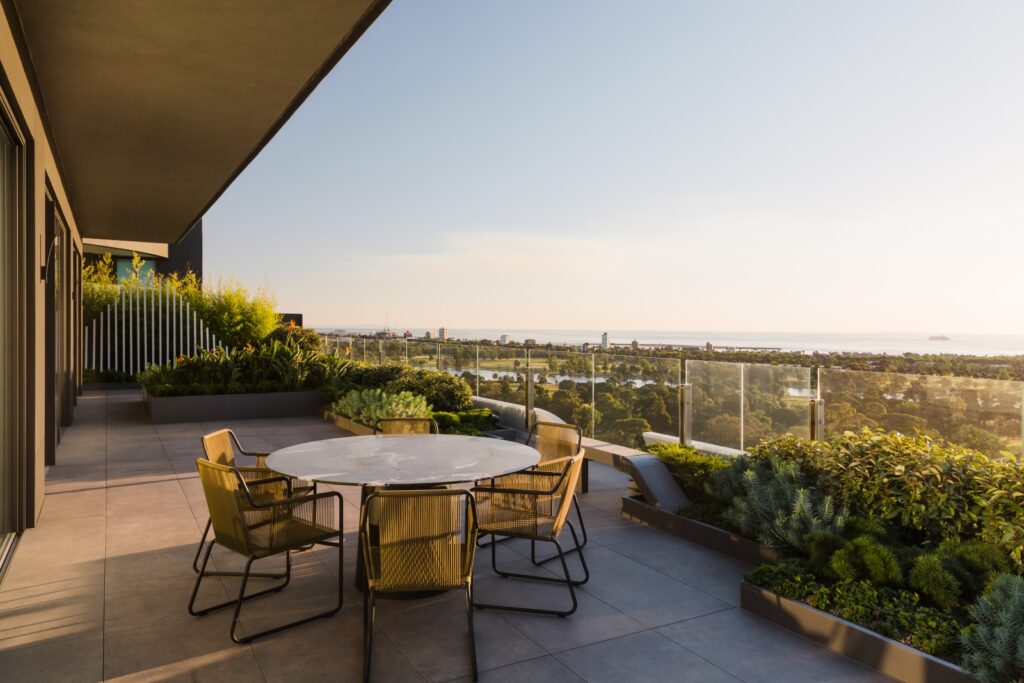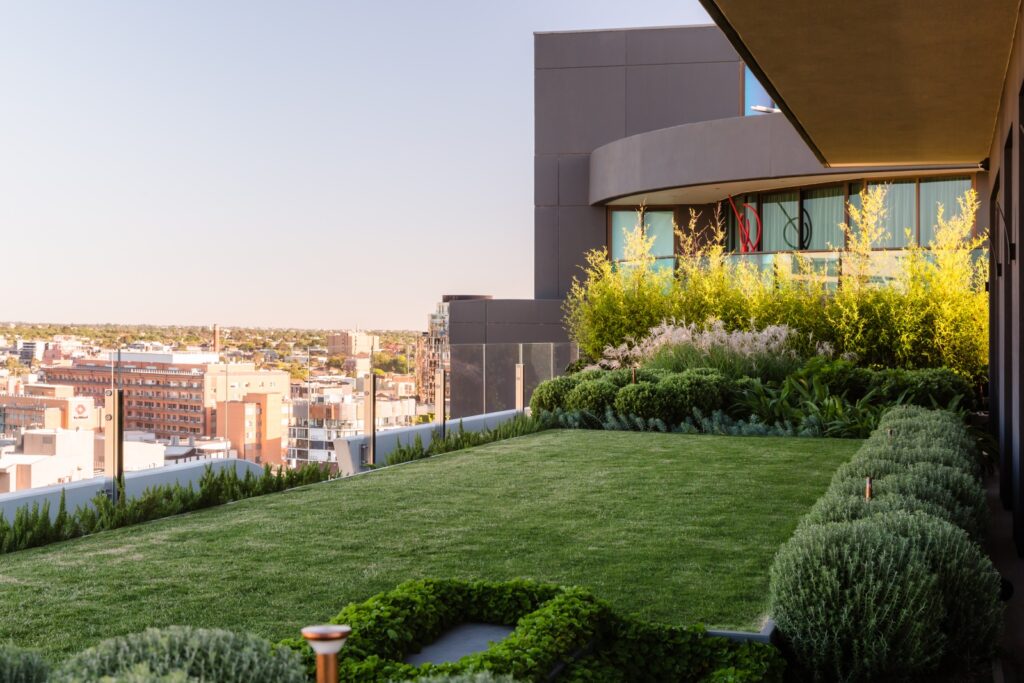Soil for green roofs is a key component of a successful green roof installation. Green roof soil has to be engineered for several goals: to be lightweight, for water retention and drainage, to contain the right amount of nutrients for the plants on the roof, and to be long-lasting, ensuring long-term success of the green roof. The makeup of the green roof soil you use will frequently make or break your green roof project.
High-quality green roof soil should be designed according to ASTM E2777-14 (Standard Guide for Vegetative [Green] Roof Systems) and the FLL Green Roofing Guideline (Forschungsgesellschaft Landschaftsentwicklung Landschaftsbau e.V. [FLL] Landscape Development and Landscaping Research Society, 2008).
So how do you know if your green roof soil is up to the challenge? You need to ask your soil provider for a green roof soil test report.
For green roof soil, a soil analysis will show a number of things, including the particle size distribution of the soil, dry weight density, density at maximum water-holding capacity, total porosity, and air-filled porosity. It will also provide details on pH, soluble salts, organic matter, phosphorous, potassium, calcium, magnesium, nitrate, and ammonium. A soil test report will give you a good, baseline view into how the soil will perform on a green roof.
Even with a green roof soil test report, there are other soil details you should ask about before you purchase green roof soil. Any reputable green roof soil provider should be more than happy to provide these details to you as part of the specification and purchasing process.
Some of the areas where you will want more information include details on the lightweight aggregates used, whether perlite, vermiculite, and styrofoam are used in the mix, and the characteristics of the compost used in the soil.

Lightweight Aggregates
Although not part of the ASTM/FLL guidelines for green roof media, lightweight aggregates used in green roof construction should be tested and pass a freeze/thaw process to ensure that the aggregates can withstand freeze/thaw cycles without them breaking down. This is not as critical in sub-tropical climates, but most green roof installations within North America are in climate zones that will experience freezing temperatures at some time during the year.
Perlite / Vermiculite / Styrofoam
Materials such as these, used extensively in the potting soils industry as an additive to lighten and aerate potting soil blends, are sometimes used to reduce weight in a green roof media.
Choosing materials such as these for the purpose of reducing weight can result in unwanted results in a green roof application. Heavy rain events, especially during the period prior to vegetation being fully established on the roof surface, can lead to these materials floating to the surface and ultimately into the drain ports where they could cause clogging.
Additionally, if these particles only migrate to the green roof media surface (without washing away), the overall gradation matrix of the media will have changed, potentially causing unwanted problems. And as is the case with lightweight aggregates, you should ask your soil provider if these types of materials have passed a freeze/thaw test process.
Compost
It goes without saying that a high-quality compost is an important component in a green roof media. You should ask for test data for the compost to ensure that the proper pH, electrical conductivity, nutrients, and organic content values are in line. You should also ask about the stability of the compost – in other words, whether the compost has completed all or most of the composting process before it is incorporated into the green roof soil.
One thing that doesn’t show up in test results is the composition of the compost itself. You will want to know the amount of wood particles, whether they be bark, fiber, or chips, that are present in the compost. A high percentage of these types of particles translates into a compost that will, over time, experience volume reduction as these wood particles decompose. As a secondary consequence of this decomposition, nutrients from the compost itself will be taken up by these wood particles to aid in the decomposition process, thereby depriving a percentage of the compost nutrients being available to the plants.
While green roof soil test reports are an important baseline indicator of green roof soil performance, we highly recommend getting more details in these specific areas. Knowing exactly what’s in your green roof soil will set you up to have a successful green roof project for many, many years to come.
Jason Brown is a native of Landenberg, PA and is the Sales Director at Skyland USA, creators of rooflite. He has 24 years of experience in the green industry, which includes introducing the Knock Out® family of shrub roses, designing and selling beautiful landscape enhancements, and selling perennials, shrubs, and trees to independent garden centers throughout the Mid-Atlantic U.S. He is happily married for 19 years and a proud father of two beautiful children, Phoenix and Aspen. When he is not working to beautify the planet with green roofs, he enjoys spending time gardening, bike-packing, and camping with his family.
Interested in how rooflite can help? We offer a full range of green roof soil products for a variety of green roof applications. All our products are designed according to ASTM and FLL guidelines, and we follow a rigorous Quality Assurance Program with both internal and independent laboratories to ensure the performance of our soil. Our products are developed to meet our high standards and the high expectations of our customers.
 Greenroofs.comConnecting the Planet + Living Architecture
Greenroofs.comConnecting the Planet + Living Architecture







